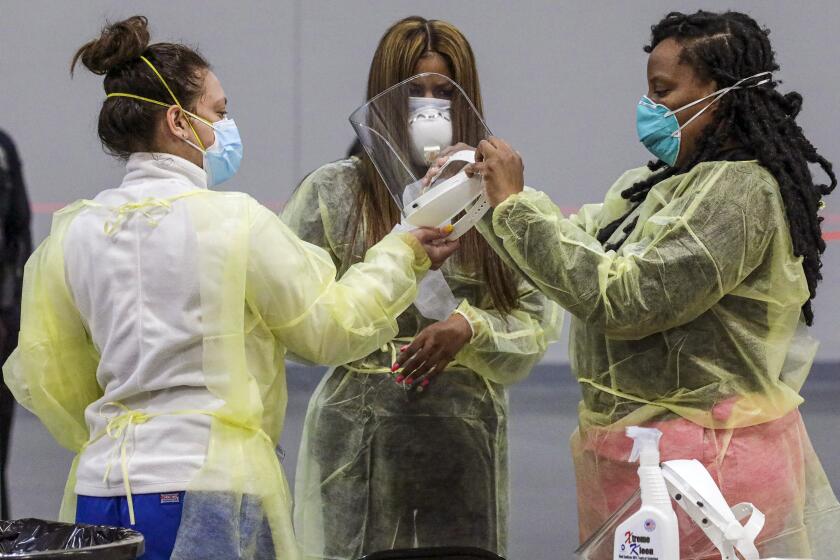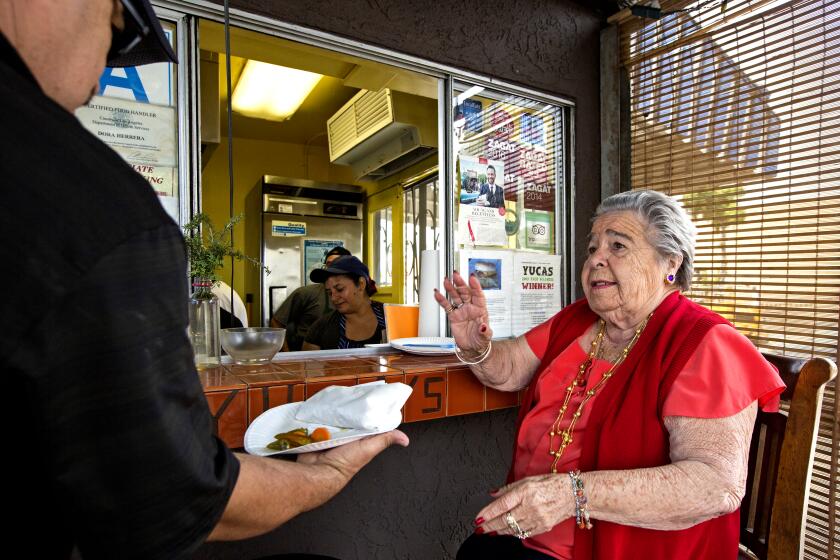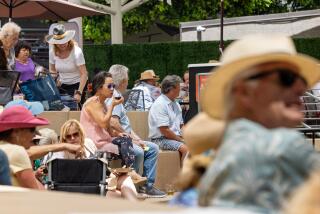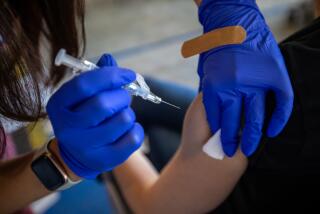California’s next COVID-19 peril: Super Bowl as superspreader event. Can we learn from past?
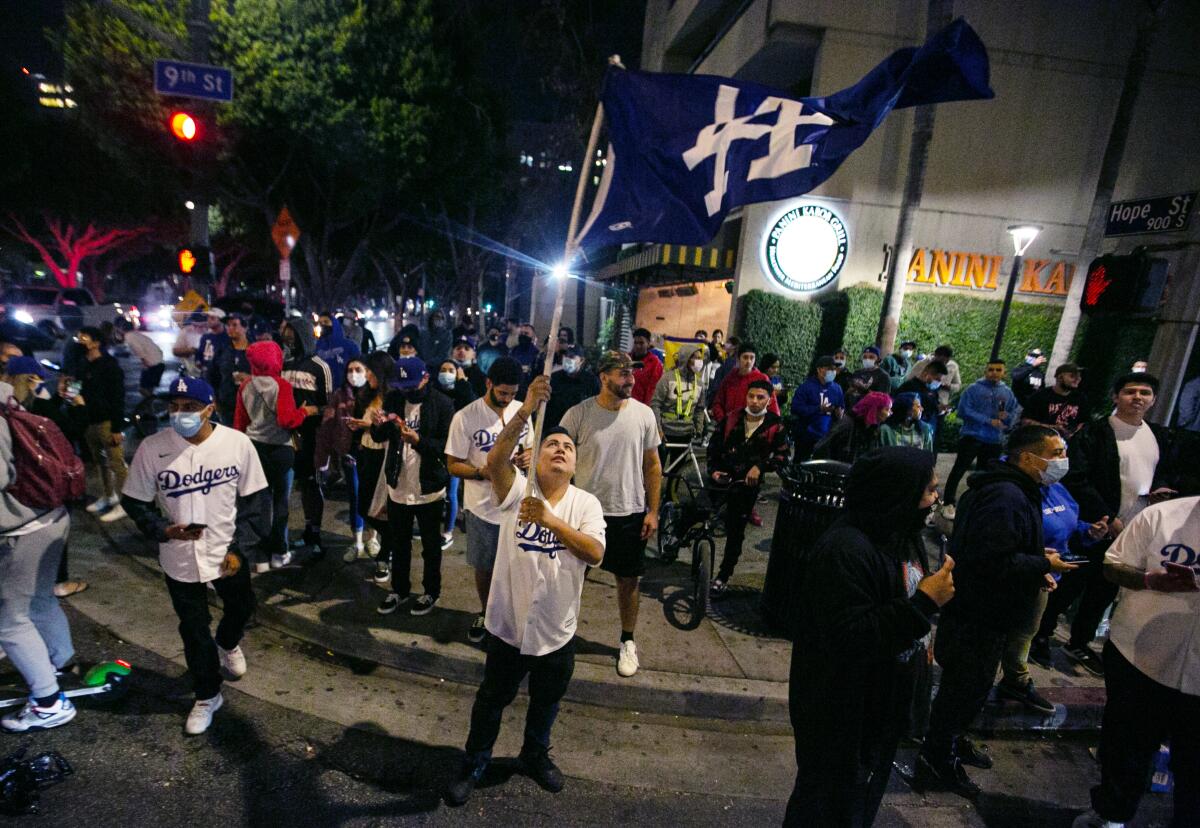
In normal times, the Super Bowl is one of the country’s premier social occasions — bringing enthusiasts and nonfans alike together for hours of football-fueled festivities.
But in the era of COVID-19, officials and experts say Sunday’s game poses a tremendous risk, and that widespread large watch parties could imperil California’s precarious emergence from the worst wave of the pandemic.
“Don’t fumble this. We’re almost there,” said Dr. Mark Ghaly, California’s health and human services secretary. “Let’s keep our guard up a little bit longer.”
The warning against Super Bowl parties is as much about avoiding the mistakes of the past as it is staving off future calamity. A big warning sign is the rise of the more contagious and possibly deadlier strain of the coronavirus first identified in Britain, B.1.1.7, that has seen considerable growth in San Diego County, which has already likely resulted in one death there and represents nearly one-quarter of the known cases nationwide.
San Diego County on Wednesday reported at least 137 confirmed cases of the B.1.1.7 variant and 50 probable cases. There were at least 611 confirmed cases of the variant reported nationwide as of Thursday.
The U.K. variant is believed to be 50% to 70% more transmissible than the regular variety of the circulating coronavirus. Simulations presented by a UC San Diego scientist to government officials warn that even with a decent vaccination strategy, average new daily coronavirus cases in San Diego County within two months could be twice as bad as the peak during the autumn-and-winter surge, overwhelming hospital capacity there, if residents again reject public health guidance to wear masks and avoid gatherings as they did late last year.
‘Super Bowl parties do have the power to derail our recovery,’ Los Angeles County Public Health Director Barbara Ferrer said this week.
Besides San Diego County, the U.K. strain has also been identified in Los Angeles, San Bernardino, Alameda and San Mateo counties, including among two students at UC Berkeley who recently came into the U.S. from abroad.
“If we let down our guard and end up having large numbers of people in our home, inside, not masked, yelling for our teams, then we can see a potential reversal of the downward trend and end up with a new surge,” said Dr. Robert Kim-Farley, medical epidemiologist and infectious diseases expert at the UCLA Fielding School of Public Health.
California’s autumn-and-winter surge has faded in part because more people followed the stay-at-home rules and there haven’t been major holidays like Thanksgiving, Hanukkah, Christmas and New Year’s recently.
“However, the Super Bowl could be an opportunity for that mixing again to occur,” Kim-Farley said. And that’s why we need to make sure we’re getting a message out: This Super Bowl is not the time to have a large party. Wait until next year.”
While many factors fueled the horrific surge that struck the state starting in late October, officials have said they believe people clustering together to follow and celebrate the championship runs of the Dodgers and Lakers added fuel to the viral wildfire — especially in Southern California, which was hammered by an avalanche of new COVID-19 infections, hospitalizations and, eventually, deaths.
The NBA Finals started on Sept. 30 and the World Series ended on Oct. 27, giving the Lakers their first championship in a decade and the Dodgers their first World Series title since 1988. The San Diego Padres made the postseason for the first time since since 2006 and people gathered in homes and at restaurants to cheer their teams.
Days after the Dodgers knocked the Padres out of the postseason on Oct. 8, there were already warning signs that a surge was possible. “We are here to sound the alarm,” the San Diego County health officer, Dr. Wilma Wooten, said on Oct. 16.
In L.A. County, the average daily number of reported cases — recorded by onset of illness or first positive tests — exceeded 1,100 a day on Oct. 12 for the first time since the end of August, when California began to reopen after the summer surge.
“You could just drive down Sunset [Boulevard], and you just see all these restaurants that have set up their TVs outside and there are dozens and dozens of people, eating and drinking ... no masks, cheering, yelling, gathering, high-fiving each other,” L.A. County Public Health Director Barbara Ferrer said. “We were watching all of that and understanding in our minds that this was really contributing to what we were seeing.”
The highly contagious coronavirus spreads through respiratory particles emitted when people talk and breathe, and shouting and cheering — especially indoors but also a risk in outdoor settings — greatly raises the risk of transmission.
Such gatherings, along with those held over Halloween and Thanksgiving, were “the beginning of a surge that led to a lot of death in California, a really hard and dark period,” Ghaly said this week. Since Oct. 15, more than 26,000 COVID-19 deaths of Californians have been reported, more than 60% of California’s cumulative COVID-19 death toll of more than 43,000.
California was forced to implement another round of stay-at-home orders and business closures that officials credit with blunting the severity of the latest surge, and keeping the state’s hospitals from being so overwhelmed that doctors would have been forced to ration hospital care.
As severe as California had its latest surge, neighboring Arizona — which has no statewide mask order and has kept indoor restaurants and bars open — has suffered a far greater per capita death rate. If California had Arizona’s death rate, California would have a cumulative COVID-19 death toll of nearly 78,000.
The Super Bowl is routinely the most popular television broadcast of the year, and tens of millions of people would typically attend private parties or pack into crowded restaurants and bars to watch.
The director of the U.S. Centers for Disease Control and Prevention, Dr. Rochelle Walensky, urged Americans to watch the game between Kansas City and Tampa Bay with people “only virtually or with the people you live with.” For those who still want to gather, the CDC suggested hosting an outdoor viewing party, watching the game on a projector screen, where people from different households can sit six feet or more apart.
L.A. County allows small private gatherings, but they must be held outdoors, with no more than three households and 15 people attending, and requires physical distancing and mask use when not actively eating or drinking.
The warnings from health officials follow the recent reopening of outdoor restaurant dining, which was shuttered across much of California for weeks as the winter coronavirus wave crested.
Who gets California’s COVID-19 vaccine? A ‘Sophie’s Choice’ moment for many in need.
That prohibition was lifted last month, after the state rescinded the regional stay-at-home orders that had been in place across Southern California, the Bay Area and San Joaquin Valley.
While undoubtedly a boon for struggling businesses, the reopening is still a source of heartburn in some corners — particularly L.A. County, where health officials have long warned that, without proper precautions, outdoor dining areas could set the table for amplified coronavirus transmission, a contention disputed by many in the restaurant industry.
To combat the risk of outdoor viral transmissions in restaurants, L.A. County officials imposed a new order for outdoor dining areas requiring “televisions or other screens that broadcast programming must remain off until further notice.” Ventura County is also recommending businesses turn off their TVs over the weekend, but has stopped short of an outright ban, according to a statement.
UC San Francisco epidemiologist Dr. Kirsten Bibbins-Domingo said it was reasonable for L.A. County health officials to issue such an order.
“If I were in public health, and I wanted to figure out how to protect the public, I would want to communicate that being with people you don’t know, with your masks off, screaming and cheering for football games is inherently a riskier activity; and that outdoor dining, to the extent that it encourages that by having the TVs on, will also be a risky set of activities,” Bibbins-Domingo said. “I think it’s absolutely appropriate, given what we know about how the virus is transmitted, what we know about human behaviors, particularly around sporting events.”
The pandemic seemed to spell doom for small businesses, which play an outsize role in the American economy and in strengthening communities. But some research and data show encouraging signs — and emerging winners and losers.
Times staff writers Jaweed Kaleem and Ryan Menezes contributed to this report.
More to Read
Sign up for Essential California
The most important California stories and recommendations in your inbox every morning.
You may occasionally receive promotional content from the Los Angeles Times.

